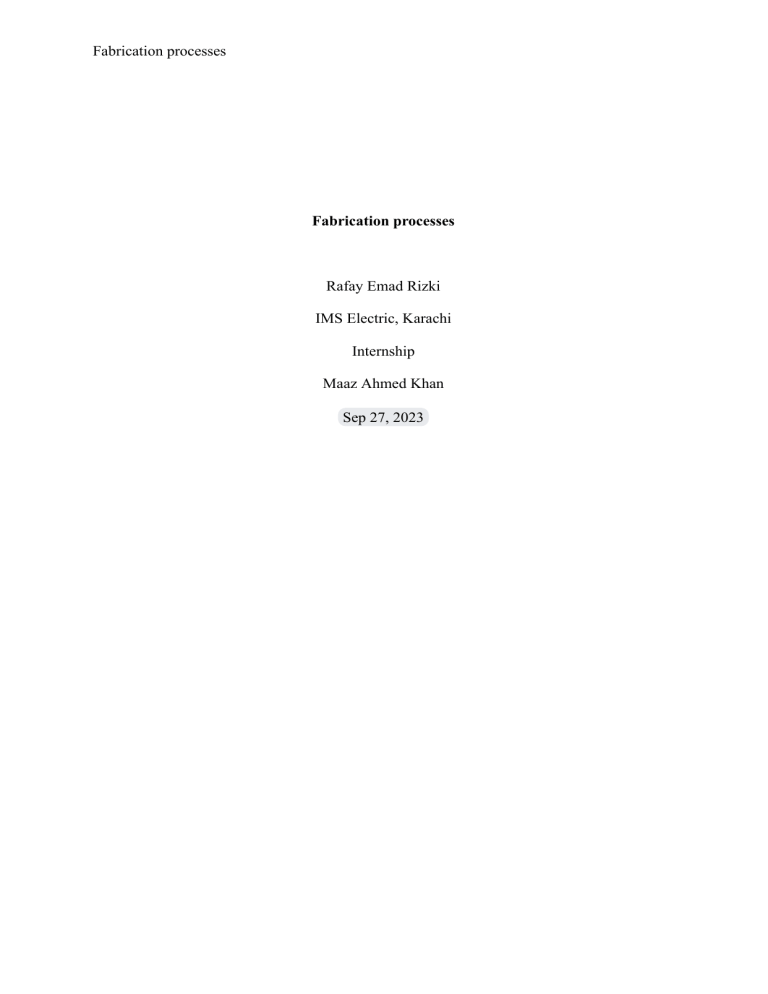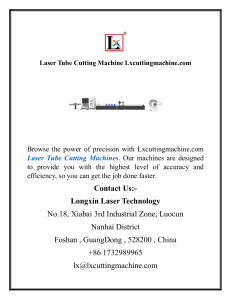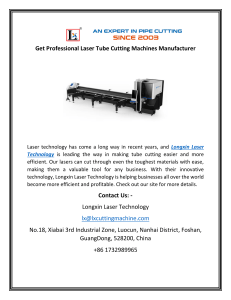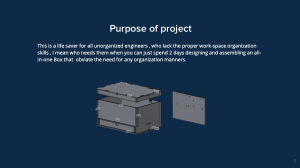Fabrication Processes Report: IMS Electric
advertisement

Fabrication processes Fabrication processes Rafay Emad Rizki IMS Electric, Karachi Internship Maaz Ahmed Khan Sep 27, 2023 Fabrication processes Summary This report will cover the machines currently in operation at IMS Electric, Karachi. I visited the fabrication side of the manufacturing plant where Galvanized iron (zinc-coated steel sheets), Aluminium, Mild steel, PVC, and polycarbonate sheets of thickness ranging from 0.6mm to 5mm were being used. Three main categories of machines were being used which are as follows: 1. Punching machine ( Finn-Powers E5 Turret Punch Press ), 2. Laser cutting machine ( Senfeng ), 3.Bending machine ( Finn-Power E-Brake ). Fabrication processes Fabrication processes Punching In this particular manufacturing plant, the Finn-Powers E5 Turret Punch Press is being used for the punching process. The procedure for the punching process is as follows; firstly as per the client, the sheet material is selected from PVC, polycarbonate, GI, AL, and MS. The thickness and size of the particular sheet is also specified. A programmer has to write down the code files in the software called NC express required by the machine's software to be used, the files are uploaded to the interface on the machine, and with the use of clamps, the particular sheet is set onto the punching table. The program files are run and the machine starts to operate. A typical run time is approximately 20 minutes. After the punching process, the finish is not smooth and may cause an injury so a technician with a grinder smooths out the edges. And finally, the parts are labeled and organized for the logistics team to pick up. Fig1.0: Shows the Finn-Powers E5 Turret Punch Press. Fabrication processes Fig1.1: End product from punching machine. Laser Cutting In this manufacturing process, the Senfeng Metal Laser Cutting machine was used. This machine uses oxygen and nitrogen gas to form a laser for cutting. For GI sheets nitrogen gas is used while for MS sheets oxygen gas is used. This machine also uses the same procedure first the program files from Autocad are uploaded to the Lasers interface and after the files have been uploaded the machine is started and in a few moments the final finished product is ready. One important thing is that Laser cutting is used for complex and finely detailed parts as the cuts are smooth and already finished. But the downside is that the laser machine takes a longer time to produce a cut piece. Fabrication processes Fig1.3: Senfeng Laser cutting machine in operation. Fig1.4: End product from Laser Cutting machine. Fig1.5: Finished parts ready to be installed or bent. Fabrication processes Bending In this manufacturing process, a Finn-Power E-Brake bending machine is being used. After the parts have gone through laser cutting or punching the parts that do require bending are sent to this machine where a technician using CAD files analyzes where the bends need to be made. This machine has a bending force of 27 tons and a variety of different bending dies which are replaced as required for a particular job. After calibrating the machine the bending process is started and the operator adjusts the parts accordingly for each bend. After the bending job is completed MS parts are sent to the paint shop to be painted while GI parts are sent to the logistics department. Fig1.6: Finn-Power E-Brake bending machine. Fig1.7: Bracket formed from bending.



